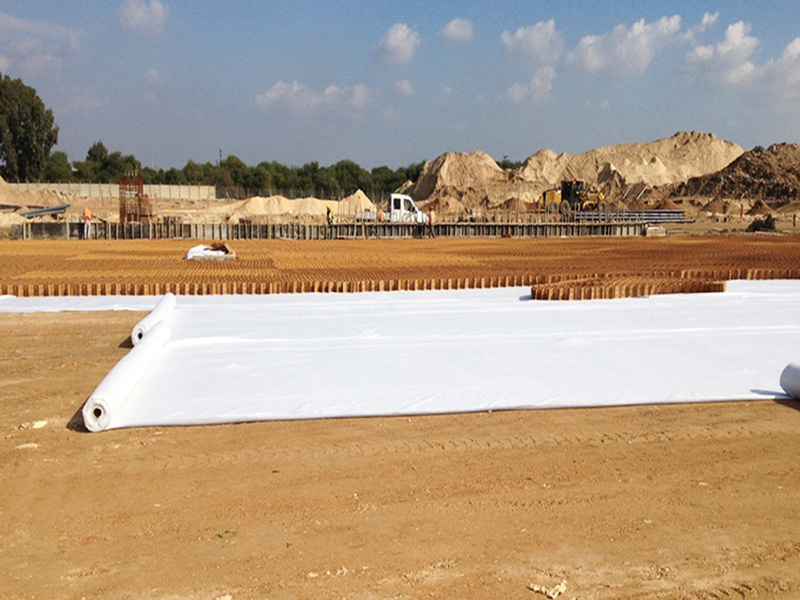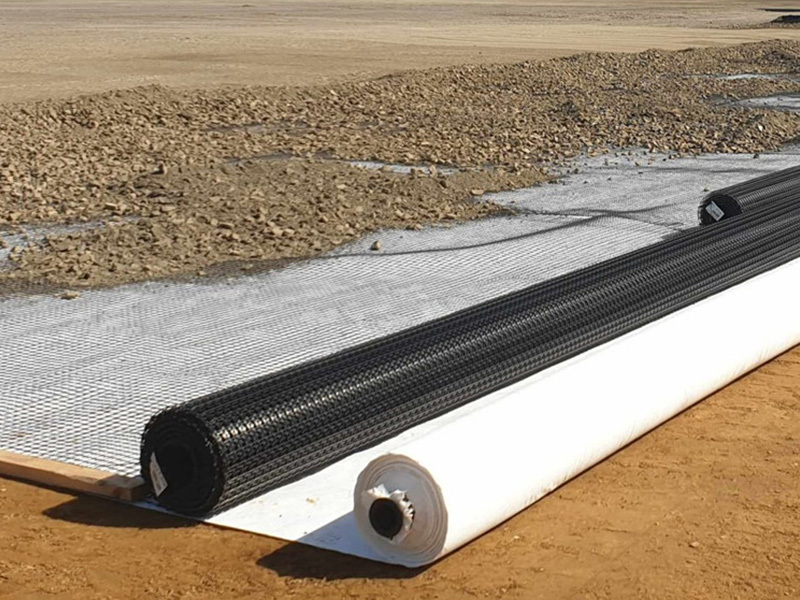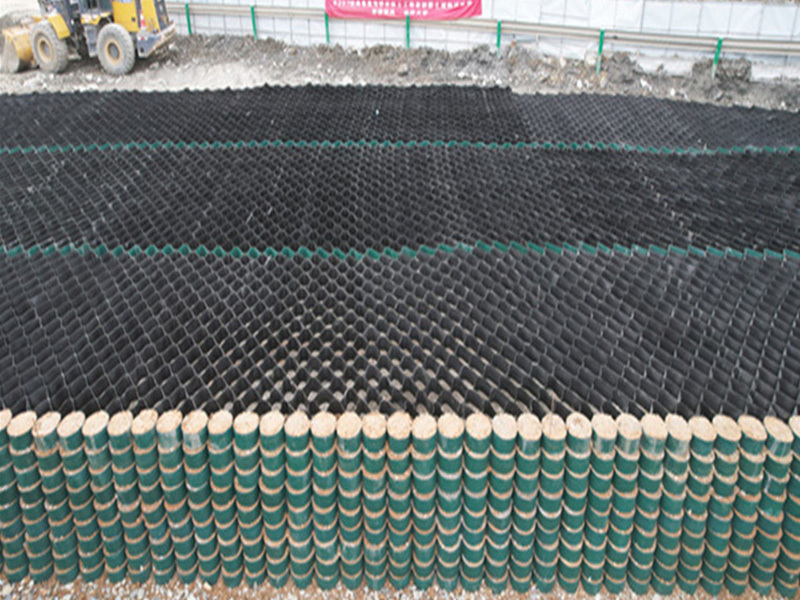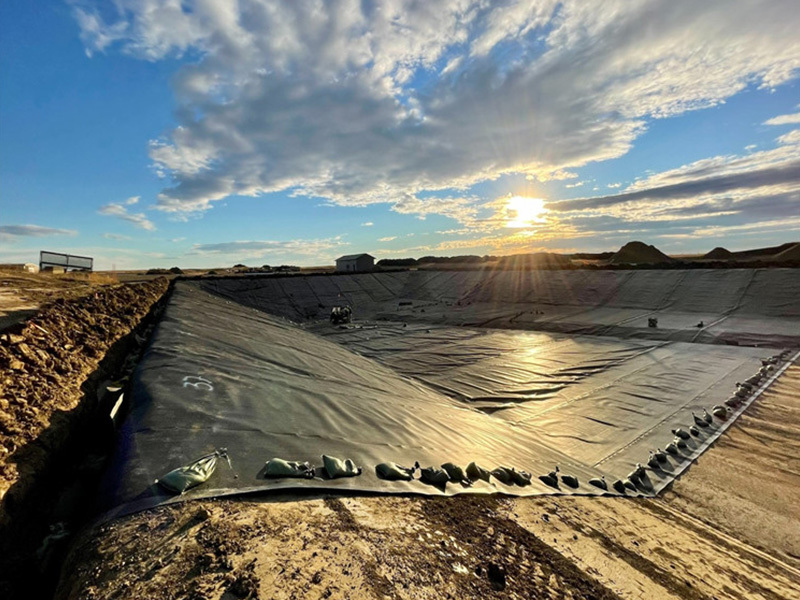Geocell Slope Stabilization: Construction Techniques and Engineering Applications
Release time:
May 10,2023
1. Introduction
Geocell slope stabilization systems represent an advanced soil confinement technology for erosion control and hillside reinforcement. These three-dimensional cellular structures, typically manufactured from high-density polyethylene (HDPE) or novel polymer alloys, provide exceptional slope stability through mechanical interlock and lateral confinement of infill materials.
2. System Components and Material Specifications
2.1 Geocell Characteristics
Material Composition:
UV-stabilized HDPE (≥97% purity)
Perforated designs (6-20mm apertures) for drainage
Carbon-black additive for extended service life
Dimensional Parameters:
Cell height: 100-300mm (standard range)
Cell diameter: 200-400mm
Sheet dimensions: 4m×25m (unexpanded)
2.2 Ancillary Materials
Reinforcement Elements:
Geogrid underlayers (for high shear slopes)
Anchor spikes (600-900mm length)
Infill Options:
Aggregate (25-50mm crushed stone)
Vegetated soil (engineered growth medium)
Flowable fill (for structural applications)
3. Engineering Design Considerations
3.1 Slope Stability Analysis
Geotechnical Evaluation:
Shear strength parameters (c, φ)
Groundwater conditions
Seismic activity factors
Design Calculations:
Global stability analysis (Bishop's method)
Bearing capacity verification
Hydraulic conductivity requirements
3.2 Configuration Options
Surface Protection: Single-layer deployment
Structural Reinforcement: Multi-tiered systems with benching
Hybrid Solutions: Geocell-geogrid composites
4. Construction Methodology
4.1 Site Preparation
Slope Grading:
Cut-and-fill operations to ≤1:1.5 gradient
Subgrade compaction to 92% Proctor density
Berm construction at 10m vertical intervals
Surface Treatment:
Geotextile installation (200g/m² minimum)
Hydraulic erosion control measures
4.2 Geocell Installation
Deployment Protocol:
Unfolding perpendicular to slope direction
Expansion to design height (mechanical stretchers)
Anchor placement: 1m grid pattern
Connection Systems:
J-hook connectors (galvanized steel)
Ultrasonic welding (for critical applications)
Zip-tie fasteners (temporary fixation)
Infill Placement:
Layered compaction (150mm lifts)
Vibratory plate compactors (≥90% relative density)
Surface grading for drainage
4.3 Vegetation Establishment
Hydroseeding: Tackified fiber matrix
Erosion Control Blankets: Biodegradable varieties
Root Reinforcement: Soil stabilization additives
5. Quality Control Measures
5.1 Material Testing
Tensile Strength: ≥23MPa (machine direction)
Creep Resistance: ≤2% @ 20°C/10 years
Environmental Stress Crack Resistance: ≥500hrs
5.2 Field Verification
Anchor Pullout Tests: ≥1.5kN resistance
Infill Density Testing: Nuclear density gauge
Surface Runoff Monitoring: 10-year storm simulation
6. Performance Metrics
Erosion Reduction: ≥85% vs. unprotected slopes
Load Distribution: 3:1 stress reduction ratio
Service Life: 50+ years (UV-protected applications)
Deformation Limits: ≤3% under design loads
7. Special Applications
7.1 High-Risk Slopes
Landslide Remediation: Deep-seated failure repair
Mine Reclamation: Acid rock drainage control
Earthquake Zones: Flexible seismic performance
7.2 Transportation Infrastructure
Cut Slope Protection: Adjacent to highways
Embankment Reinforcement: Bridge approaches
Railway Stabilization: Vibration dampening
8. Case Studies
Hong Kong Hillside Stabilization: 45° slopes in tropical climate
Colorado Mine Restoration: 3-tier geocell system
Alpine Road Project: Snow load resistance verification
9. Maintenance Protocol
Annual Inspections: Post-monsoon/spring thaw
Repair Techniques:
Spot infill replacement
Anchor reinforcement
Surface vegetation renewal
10. Emerging Technologies
Smart Geocells: Strain monitoring sensors
Recycled Material Variants: Sustainable polymers
Self-vegetating Systems: Embedded seed technology
11. Conclusion
Geocell slope stabilization systems provide engineers with a versatile, cost-effective solution for hillside construction challenges. Their unique combination of mechanical reinforcement and ecological compatibility makes them particularly suitable for sustainable infrastructure development. When properly designed and installed, geocell structures demonstrate superior performance compared to conventional retaining systems, with typical cost savings of 30-50% and significantly reduced environmental impact.
Key Advantages:
Immediate load-bearing capacity
Enhanced surface drainage characteristics
Progressive failure mode (vs catastrophic collapse)
Aesthetically favorable vegetative cover
For critical projects, the integration of real-time monitoring systems with geocell networks enables predictive maintenance and early warning of potential instability, representing the next frontier in slope stabilization technology.
News
Geocell Technology for Slope Protection: Mechanisms and Applications
Geocell Technology for Slope Protection
HDPE Geomembrane Waterproofing Construction for Reservoirs
Waterproofing Construction for Reservoirs








